Best
Overall Tenor Ukulele
-
Overall: Highly Durable And Resistant To Changes In Temperature And Humidity
-
Best Feature: Made Of Solid Koa Wood For Warm, Rich Tones
-
TedScore™: 9/10
Best
Value Tenor Ukulele
-
Overall: Perform With A Flexible Voicing Thanks To The Walnut's Well-Balanced Sound
-
Best Feature: Emphasised Lower Mids Resulting From Mahogany Construction
-
TedScore™: 8.5/10
Best
Tenor Ukulele for Beginners
-
Overall: The All-Mahogany Body Delivers Beautifully Rich Warmth
-
Best Feature: Style And Tones Inspired By Traditional Hawaiian Designs
-
TedScore™: 8/10
Tuning a tenor ukulele can be a delightful journey to mastering its unique sound. Whether setting up for high G or low G, getting the right notes is key to the quality of your music.
I’ve played with different tuning methods and found that once you get it right, the tenor ukulele sings like no other. Imagine hitting those perfect chords effortlessly.
Ready to tweak your ukulele for the best resonance? Let’s explore the tuning techniques that will make your music sparkle.
What is Tenor Ukulele Tuning?
If you’re new to playing the tenor ukulele, one of the first things you’ll need to learn is how to tune it properly. The standard tuning for a tenor ukulele is G-C-E-A, with the G string being the highest-pitched string.
However, there are also other variations of tenor ukulele tuning that you can try out, such as low G tuning or high G reentrant tuning.

Why is Tuning Important?
Tuning your tenor ukulele is crucial for several reasons.
First, playing in a group ensures that your instrument sounds good and is in tune with other instruments.
Secondly, it helps you to develop your ear for music and train your pitch recognition skills.
Lastly, playing an out-of-tune instrument can be frustrating and discouraging, so having your tenor ukulele in tune can help you enjoy it more.
When it comes to tuning your tenor ukulele, there are several methods you can use. You can tune it by ear, using a pitch pipe, or using an electronic tuner. Tuning by ear can be challenging for beginners, but it’s a useful skill to develop.
Using a pitch pipe can be helpful, but getting the pitch exactly right can also be difficult. An electronic tuner is the most accurate and easiest method, especially for beginners.
Regardless of your chosen method, it’s important to tune your tenor ukulele regularly. Strings can go out of tune due to changes in temperature or humidity or simply from playing the instrument. You’ll ensure it sounds its best and is ready to play by tuning your tenor ukulele before each practice or performance.
Different Ways to Tune a Tenor Ukulele
Tuning your tenor ukulele is essential to ensure that it produces the correct sound. There are different ways to tune a ukulele, and each method has advantages and disadvantages. Here are some of the most common ways to tune a tenor ukulele:
Tuning by Ear
Tuning by ear is a good way to train your ear and develop your musical skills.
To tune your tenor ukulele by ear, you need to know the standard ukulele tuning, G-C-E-A.
You can use a reference pitch, such as a piano or pitch pipe, to help you tune your instrument.

Using a Piano or Pitch Pipe as Reference
Using a piano or pitch pipe is an excellent way to tune your tenor ukulele string if you don’t have an electronic tuner.
To use a piano or pitch pipe, you must play the reference pitch and tune each string until it matches the pitch.
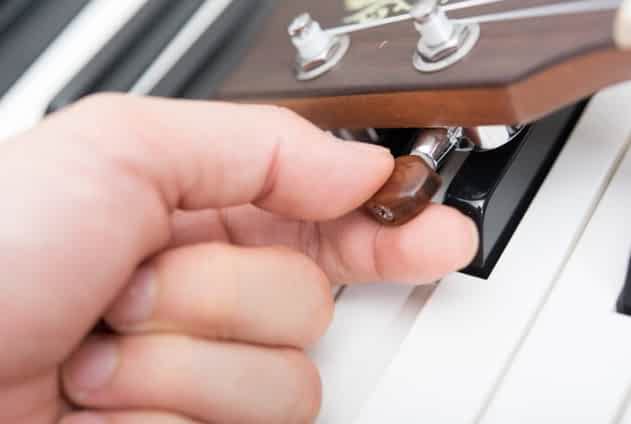
Using an Electronic Tuner
An electronic tuner is the easiest and most accurate way to tune your tenor ukulele.
Electronic tuners are available in different types, such as handheld and clip-on tuners.
Handheld tuners are more accurate, but clip-on tuners are more convenient.
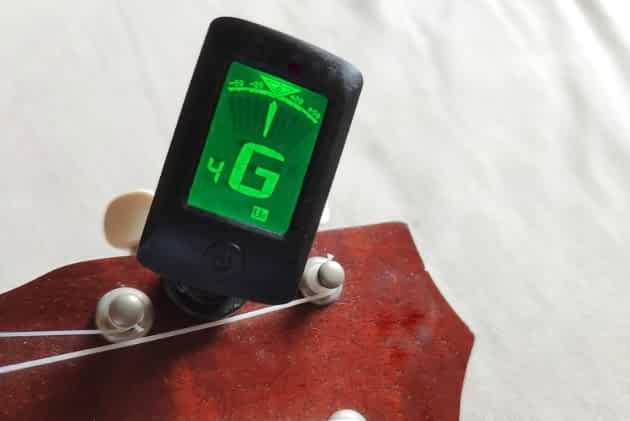
Using a Clip-On Tuner
Clip-on tuners are small and easy to use, making them popular among ukulele players.
To use a clip-on tuner, you need to clip it onto the headstock of your tenor ukulele and pluck each string.
The tuner will detect the pitch and display it on the screen.

Tuning a Tenor Ukulele in Standard Tuning
If you have just purchased a tenor ukulele, you first need to tune it. The standard tuning for a tenor ukulele is GCEA, the same as for a soprano, concert, or baritone ukulele. Here’s how you can tune your tenor ukulele in standard tuning:

Tuning a Tenor Ukulele to High G
If you prefer a deeper, richer sound, you might want to tune your tenor ukulele to low G. Here’s how you can do it:
1. Start by removing the high G string from your ukulele.
2. Replace it with a low G string. Make sure to choose a string that is designed for a tenor ukulele.
3. Tune the G string first. Pluck the string and use a tuner to adjust the pitch until it matches the correct note.
4. Tune the middle C string next. Play the G string at the fifth fret and pluck the C string. Adjust the pitch until it matches the correct note.
5. Tune the E string next. Play the C string at the fourth fret and pluck the E string. Adjust the pitch until one string of it matches the correct note.
6. Finally, tune the A string. Play the E string at the fifth fret and pluck the A string. Adjust the pitch until it matches the correct note.
Remember, when tuning your tenor ukulele, always use a tuner to ensure you get the correct pitch. If a string is sharp, loosen it. If it’s flat, tighten it. And don’t forget to check the tuning regularly, especially if you’re playing for an extended period.
With a properly tuned tenor ukulele, you can create beautiful music and enjoy the unique sound of this wonderful instrument.
Alternate Tunings for
Tenor Ukulele
Alternating tunings can be great if you want to explore different sounds and styles on your tenor ukulele. Here are three popular alternate tunings you can try on your tenor ukulele:
Linear Tuning
Linear tuning is a popular alternate tuning for tenor ukuleles. In linear tuning, the strings are tuned in a linear fashion, with each string higher in pitch than the one before it. This creates a different sound and feels than the standard GCEA tuning.

Linear tuning can be great for playing in different keys and exploring new chord shapes. It can also be a good option if you’re looking for a brighter, more resonant sound.
Baritone Tuning
Baritone tuning is another popular alternate tuning for tenor ukuleles. When tuning baritone ukuleles, the strings are tuned lower than in standard GCEA tuning, creating a richer sound.
Here’s how to tune your tenor ukulele to baritone tuning:

Note that this tuning requires different strings than standard tenor ukulele strings. You’ll need to use baritone ukulele strings, which are thicker and longer than standard tenor ukulele strings.
Baritone tuning can be great for playing blues, jazz, and other styles that benefit from a richer sound. It can also be a good option if you’re looking to play with a lower vocal range.
Flat Tuning
Flat tuning is a less common alternate tuning for tenor ukuleles, but it can create some interesting and unique sounds.
All strings are tuned down a half step in flat tuning, creating a slightly darker, more mysterious sound.
Here’s how to tune your tenor ukulele to flat tuning:
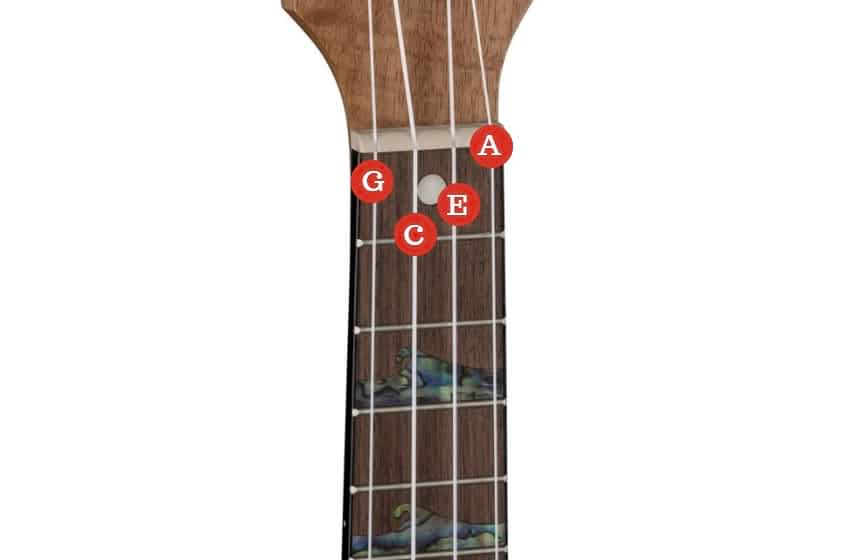
Flat tuning can be great for playing in minor keys and creating a more melancholy or introspective mood. It can also be a good option if you’re looking for a slightly different sound than standard GCEA tuning.
3 Recommended Tenor Ukuleles

PERFECT FOR: both stage and studio use
FEATURES: Emphasised lower mids resulting from mahogany construction
OTHER INFO: Perform with a flexible voicing thanks to the walnut's well-balanced sound
Kala KA-TE Electro-Acoustic Tenor Ukulele
When you check the price above, you’ll see there are loads of great places to buy this item. Our personal favorite is Gear4music.
It is the largest music retailer in the UK and fast becoming the most respected online music shop in the US too. Their customer service is excellent, they have competitive prices, really fast shipping, and usually have the longest guarantee.
Most professional musicians use Gear4music, so there is no reason why you shouldn’t too!
- Classy and uniformed look attributable to a natural finish
- Ideal for players who enjoy the ukulele's natural warmth but require extra bass to support the sound
- Perfect for both stage and studio use
- May require a bit of adjustment to get the best sound out of the built-in electronics
The professional musician who wrote this article combined many things,
from the product build, manufacturer’s reputation through to feedback
from other users, to create our famous TedScore™.
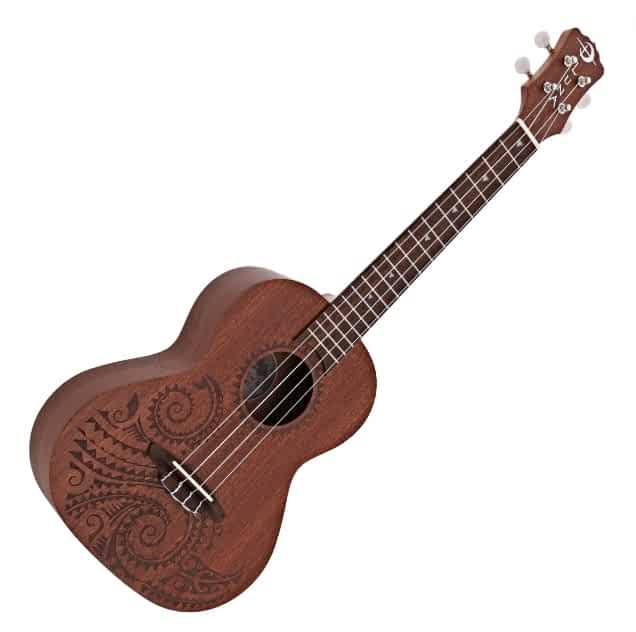
PERFECT FOR: beginners
FEATURES: Style and tones inspired by traditional Hawaiian designs
OTHER INFO: The all-mahogany body delivers beautifully rich warmth
Luna Tattoo Tenor Ukulele
When you check the price above, you’ll see there are loads of great places to buy this item. Our personal favorite is Gear4music.
It is the largest music retailer in the UK and fast becoming the most respected online music shop in the US too. Their customer service is excellent, they have competitive prices, really fast shipping, and usually have the longest guarantee.
Most professional musicians use Gear4music, so there is no reason why you shouldn’t too!
- Smooth playing C-shaped neck and walnut fingerboard
- Tenor size offers incredible projection and volume
- Suits a wide variety of playing styles and musical genres
- May not have the same tonal depth and complexity as a solid wood ukulele
The professional musician who wrote this article combined many things,
from the product build, manufacturer’s reputation through to feedback
from other users, to create our famous TedScore™.
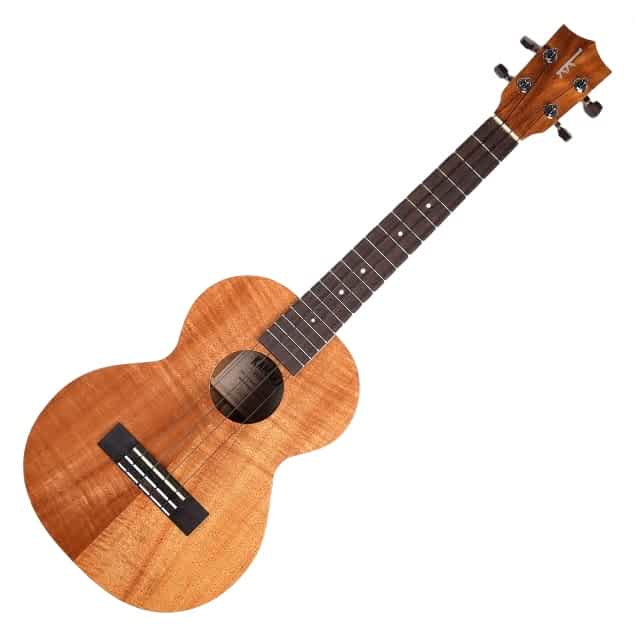
PERFECT FOR: intermediate to advanced players
FEATURES: Made of solid koa wood for warm, rich tones
OTHER INFO: Highly durable and resistant to changes in temperature and humidity
Kamaka HF-3 Tenor Ukulele
When you check the price above, you’ll see there are loads of great places to buy this item. Our personal favorite is Gear4music.
It is the largest music retailer in the UK and fast becoming the most respected online music shop in the US too. Their customer service is excellent, they have competitive prices, really fast shipping, and usually have the longest guarantee.
Most professional musicians use Gear4music, so there is no reason why you shouldn’t too!
- Designed with precision tuning
- Produces a rich, warm tone
- Handcrafted by skilled artisans using traditional techniques
- The relatively high price point
The professional musician who wrote this article combined many things,
from the product build, manufacturer’s reputation through to feedback
from other users, to create our famous TedScore™.
Tips for Tuning a
Tenor Ukulele
1. Tuning in a Noisy Environment
It can be difficult to hear the notes if you’re trying to tune your tenor ukulele in a noisy environment. One solution is an electronic tuner, which can help you get precise tuning even in a noisy room.
Another option is to use a tuning app on your phone, which can also help you get precise tuning.
2. Using a Capo
If you want to play your tenor ukulele in a different key, you can use a capo. A capo is a device that clamps onto your ukulele’s neck and raises the strings’ pitch.
This can be useful for playing with a song in a different key. Just tune your ukulele with the capo on, as the tension on the strings will be different

3. Understanding String Tension
The tension on your ukulele strings can affect the sound of your instrument. Your ukulele will sound dull and muted if the strings are too loose. Your ukulele will sound sharp and tinny if the strings are too tight.
Finding the right tension balance is important to get the best sound from your tenor ukulele. You can adjust the tension by tightening or loosening the tuning pegs.
How to Get Precise Tuning on Your Ukelele
You can do a few things to get the most precise tuning possible.
First, ensure you’re tuning in a quiet environment, as mentioned earlier.
Second, use an electronic tuner or tuning app to help you get an accurate tuning.
Third, tune each string slowly and carefully, making small adjustments until you get the right pitch.
Finally, give each string a gentle tug after tuning to help stretch the strings and settle the tuning.
Tuning A Tenor Ukulele
Summary
Tenor uke tuning typically consists of G, C, E, and A strings, offering a deeper and richer sound compared to other ukulele sizes. This setup provides an excellent foundation for both beginners and seasoned players.
For a unique twist, consider experimenting with different tunings like Low G. This involves swapping the high G string for a low one.
Remember, consistency is key. Regularly tune your instrument to keep it sounding its best. A properly tuned tenor ukulele will produce a harmonious blend of notes that truly captures its melodic potential.
Nifty Breakdown of the Article:
- Standard Tuning: G-C-E-A
- Alternate Tuning: Low G
- Importance of Regular Tuning for Quality Sound
Happy strumming!
Wait, there’s more!!!
Prepare to strum your way to the perfect pitch with the best ukulele tuner! Learn more about your ukulele’s new best friend, helping you easily hit all the right notes and making tuning your tenor ukulele a breeze!
FAQ's
Yes, a tenor ukulele is tuned differently from other ukuleles.
The four strings on a tenor ukulele are typically tuned to G-C-E-A.
A tenor ukulele can be tuned to either high or low G.
The four notes on an A ukulele would be A, C#, E, and F#.
The tuning for an A tenor ukulele can vary depending on the player’s preference, but it is typically around 440 Hz.


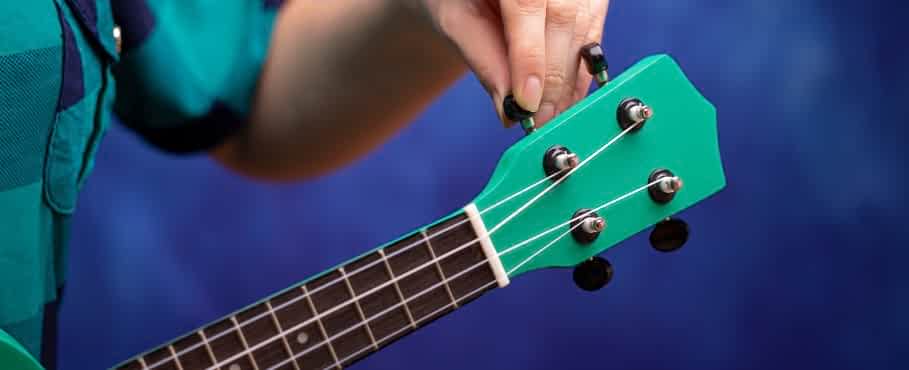







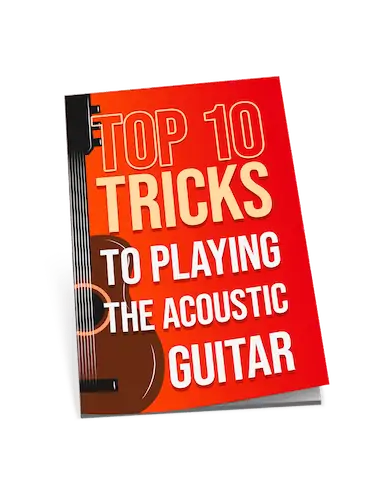
In a tenor Uke, the A is higher pitched than the G, unless you do a bass G, which is not the norm.
While I appreciate the guide, I have to say that insisting on using a clip-on tuner might not always lead to the best tuning results, especially in noisy environments. Tuning by ear, using a piano, or even an app can give more accurate results once you train your ear properly. The skill of tuning by ear is crucial and shouldn’t be overlooked. It not only helps in fine-tuning your instrument but also improves your musical ear, which is critical for any musician. Would still recommend beginners to start with a tuner for accuracy but gradually move to ear training.
It’s interesting to see how many different ways there are to tune a tenor ukulele. Using an electronic tuner seems to be the most foolproof method, but there seems to be value in learning to tune by ear as well.
Loved the part on tuning by ear, never knew it could be so straightforward! Thanks for the tips!
Hey Lewis Turner, got a quick question about the alternate tunings for the tenor ukulele you mentioned. I’m familiar with Linear and High G tunings, but Baritone and Flat tuning are new to me. How do they affect the sound of the ukulele compared to the standard tuning? Are there specific genres or styles of music where these alternate tunings really shine? Thanks for shedding light on this.
Absolutely, Baritone tuning can truly transform the ukulele’s vibe. It’s worth exploring especially if you’re diving into different genres. Happy strumming!
Baritone tuning will give your uke a much deeper sound, kinda like a mini guitar. It’s great for jazz and blues stuff. Flat tuning can make it easier to play along with brass bands or singers with lower voices, gives it a rich vibe.